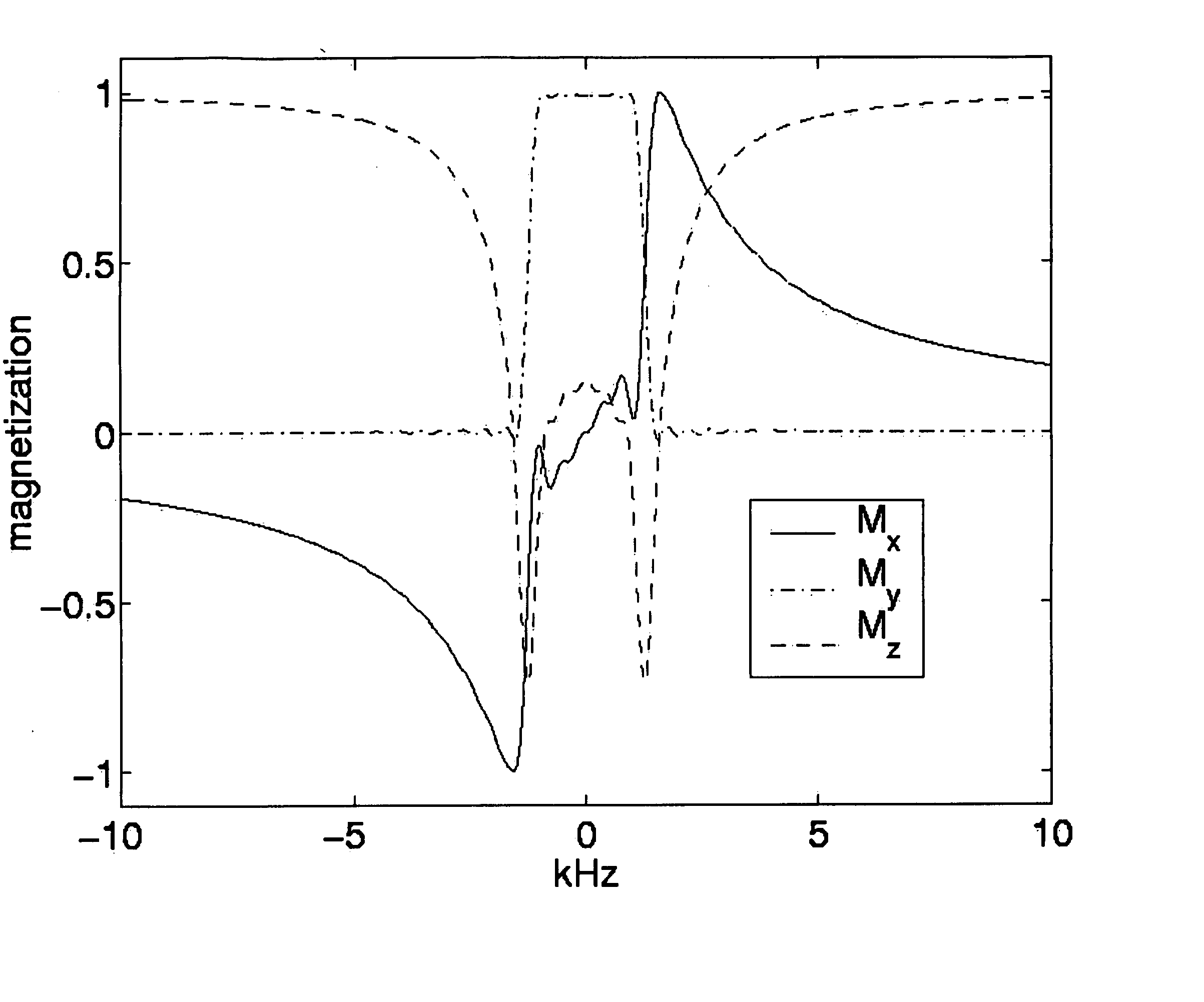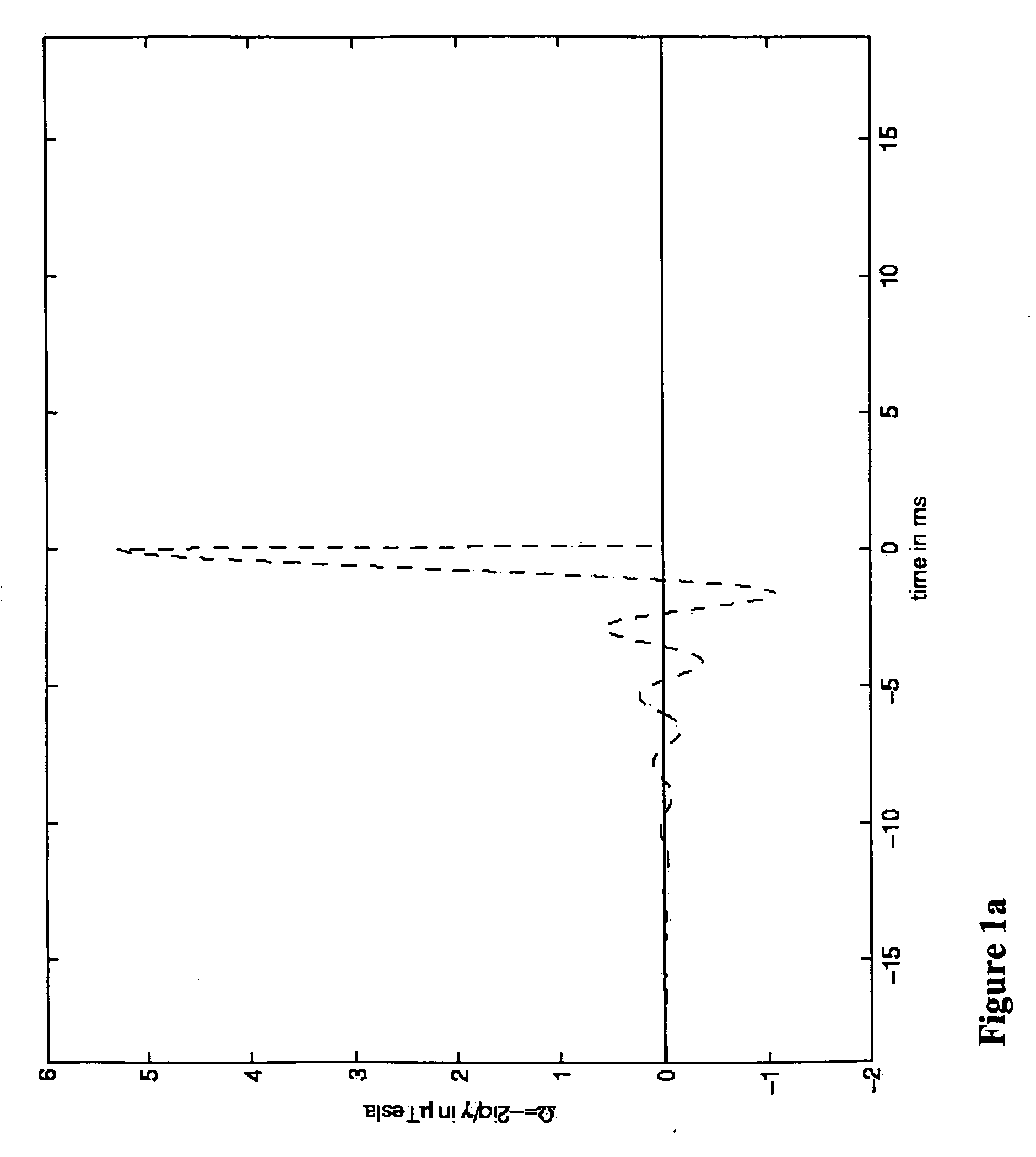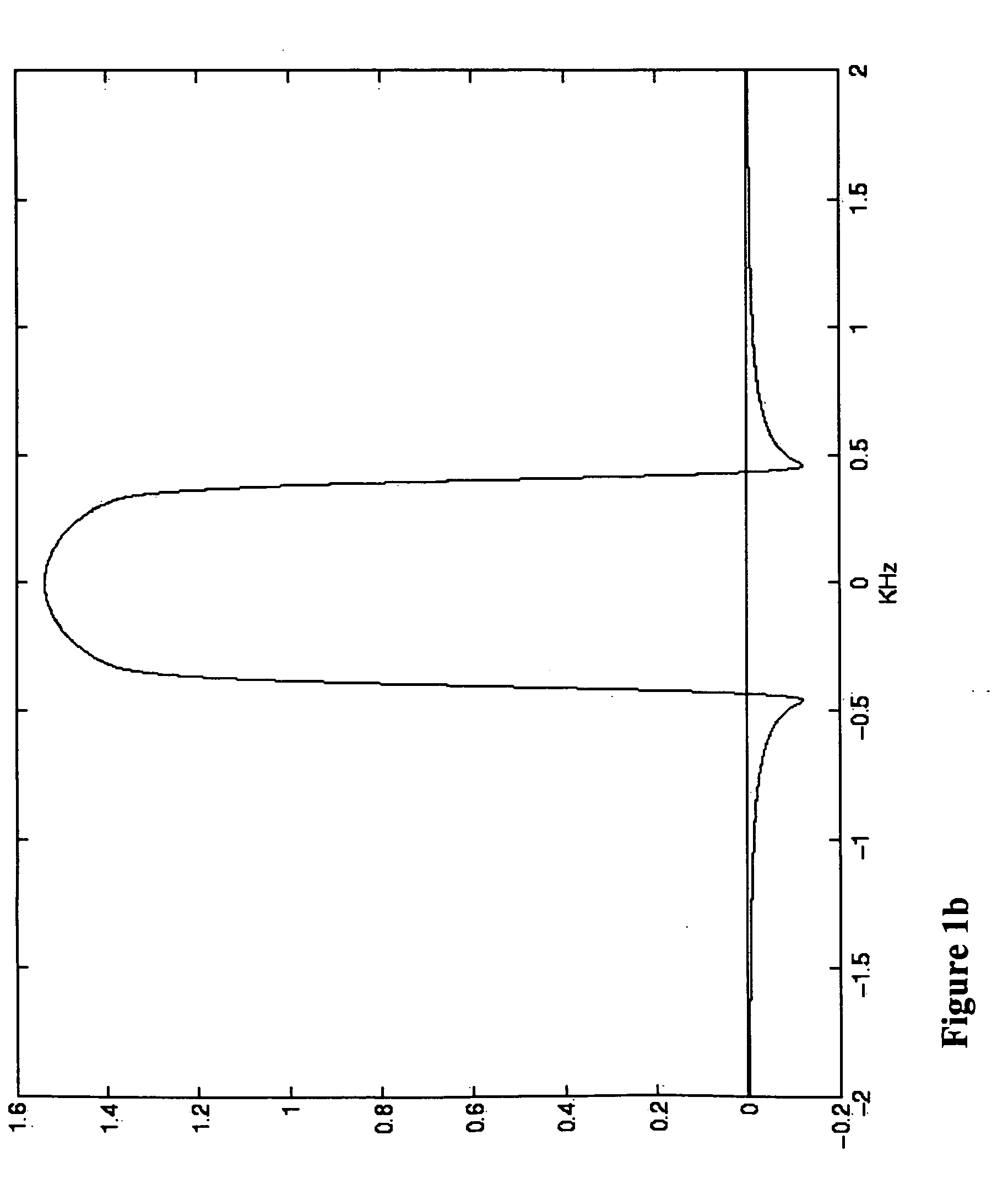Exact half pulse synthesis via the inverse scattering transform
a technology of inverse scattering and exact half pulses, applied in the field of exact half pulse synthesis via inverse scattering transform, can solve the problems of delicate cancellation between out-of-slice contributions and poor selectivity of linear approximation, and achieve the effect of increasing the snr
- Summary
- Abstract
- Description
- Claims
- Application Information
AI Technical Summary
Benefits of technology
Problems solved by technology
Method used
Image
Examples
example 1
[0049]FIG. 2(a) shows a half pulse designed using the Fourier method to produce a summed transverse profile equal to 2 within the passband and 0 a little outside it. In FIG. 2(b) is shown the summed transverse profile produced by this pulse under “ideal” circumstances, i.e. T2=∞. In FIG. 2(c) is shown the summed transverse profile produced by this pulse with T2=5 ms. Under ideal conditions this pulse is not very selective and fails to achieve the maximum summed amplitude within most of the passband. Even with a short T2, the transverse profile retains most of its amplitude and shape.
example 2
[0050] The pulse in FIG. 3(a) is designed with the IST algorithm and Equation (10) to produce the summed transverse magnetization in-slice of 2 and essentially zero out of slice. In FIG. 3(b) is shown the summed transverse profile produced by this pulse under “ideal” circumstances, i.e. T2=∞. In FIG. 3(c) is shown the summed transverse profile produced by this pulse with T2=5 ms. This pulse has somewhat larger maximum amplitude and equal duration to the previous example. Under ideal conditions, it is very selective and produces essentially the full amplitude in-slice. With a short T2, the transverse profile again retains most of its amplitude and selectivity.
example 3
[0051] In FIG. 5(a) is shown the transverse profile (not summed) produced by a single excitation using the pulse in FIG. 3(a) and in FIG. 5(b) that produced by a single excitation using the pulse in FIG. 4(a). The transverse profile has a very complicated phase relation, which needs to be respected in order to solve the half pulse synthesis problem. This is a reason why an implementation of the inverse scattering transform is desired to solve this type of pulse design problem. The transverse profile for the second pulse shows a much more rapidly decaying imaginary part.
PUM
 Login to View More
Login to View More Abstract
Description
Claims
Application Information
 Login to View More
Login to View More - R&D
- Intellectual Property
- Life Sciences
- Materials
- Tech Scout
- Unparalleled Data Quality
- Higher Quality Content
- 60% Fewer Hallucinations
Browse by: Latest US Patents, China's latest patents, Technical Efficacy Thesaurus, Application Domain, Technology Topic, Popular Technical Reports.
© 2025 PatSnap. All rights reserved.Legal|Privacy policy|Modern Slavery Act Transparency Statement|Sitemap|About US| Contact US: help@patsnap.com



